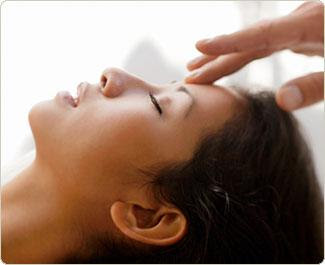Chemical peel, also known as chemexfoliation or derma-peeling, is a technique used to improve the appearance of the skin in which a chemical solution is applied to the skin, which causes it to "blister" and eventually peel off. The new, regenerated skin is usually smoother and less wrinkled than the old skin. The new skin also is temporarily more sensitive to the sun.

Chemical Peel Woman
Chemical peels can be used to:
- Reduce fine lines under the eyes and around the mouth
- Treat wrinkles caused by sun damage, aging and hereditary factors
- Improve the appearance of mild scarring
- Treat certain types of acne
- Reduce age spots, freckles and dark patches due to pregnancy or taking birth control pills (melasma)
- Improve the look and feel of skin that is dull in texture and colour

Chemical peel treatments
However, sags, bulges and more severe wrinkles do not respond well to chemical peels. They could be treated by carbon dioxide laser resurfacing, a facelift, brow lift, eyelid lift or soft tissue filler (collagen or fat). Consult with surgeon if you have some similar cases.
Procedure
The skin is thoroughly cleansed with an agent that removes excess oils and the eyes and hair are protected. One or more chemical solutions, such as glycolic acid, trichloroacetic acid, salicylic acid, lactic acid or carbolic acid (phenol), are applied to small areas on the skin. These applications produce a controlled wound, enabling new, regenerated skin to appear. our doctor may ask you to stop taking certain drugs and prepare your skin with topical preconditioning medications such as, Tretinoin topical cream, or glycolic acid. After the chemical peel, it's important to use a broad-spectrum sunscreen every day.

chemical peel before after
What to Expect?
Peeling usually involves redness, followed by scaling that ends within three to seven days. Mild peels may be repeated at one to four-week intervals until the desired clinical effect is achieved. Medium-depth and deep peeling may result in swelling, as well as the presence of water blisters that may break, crust, turn brown and peel off over a period of seven to 14 days. Medium-depth peels may be repeated in six to twelve months, if necessary.
Some peels may require bandages to be placed on part or all of the skin that is treated. Bandages are usually removed in several days and may improve the effectiveness of the treatments. Since the new skin is fragile and more susceptible to complications, avoid over-exposure to the sun after a chemical peel.

Elizabeth Hurley chemical peel
What Are the Possible Complications of Chemical Peels?
*Taking birth control pills, subsequent pregnancy or family history of brownish discoloration on the face may increase the possibility of developing abnormal pigmentation.
*Although low, there is a risk of scarring in certain areas of the face, If scarring does occur, it can usually be treated with good results.
*Risk of developing a temporary or permanent color change in the skin.
*Risk of reactivation of cold sores in patients with a history of herpes outbreaks.
*Although low, there is a risk of scarring in certain areas of the face, If scarring does occur, it can usually be treated with good results.
*Risk of developing a temporary or permanent color change in the skin.
*Risk of reactivation of cold sores in patients with a history of herpes outbreaks.


3 comments:
There are 3 main types of chemical peels
1.Superficial peels
*Superficial chemical peels are the mildest type of chemical peel and can be used on all skin types.
*Superficial chemical peels usually use liquid containing a dilute acid, most often glycolic acid.
*Dry ice solid carbon dioxide is sometimes used.
2.Medium peels
*Medium chemical peels penetrate the skin more deeply than superficial peels and cause a second-degree burn of the skin.
*Trichloroacetic acid is the main peeling agent used for medium peels.
*Medium chemical peels may be done in several steps using a different chemical solution followed by Trichloroacetic acid.
3.Deep peels
*Deep chemical peels penetrate several layers of skin and cause a second-degree burn of the skin.
*They are the strongest kind of chemical peel and are used only on the face.
*Deep chemical peels are reserved for individuals with deep wrinkles from sun exposure or is used to treat skin wrinkling around the lips and chin area.
*Deep peels tend to bleach darker skin .
*A deep peel can be done only once in most cases
Chemical peels are used to provide exfoliation, skin rejuvenation and general skin tone improvement.
Blister and peel off? Ouch!
Post a Comment